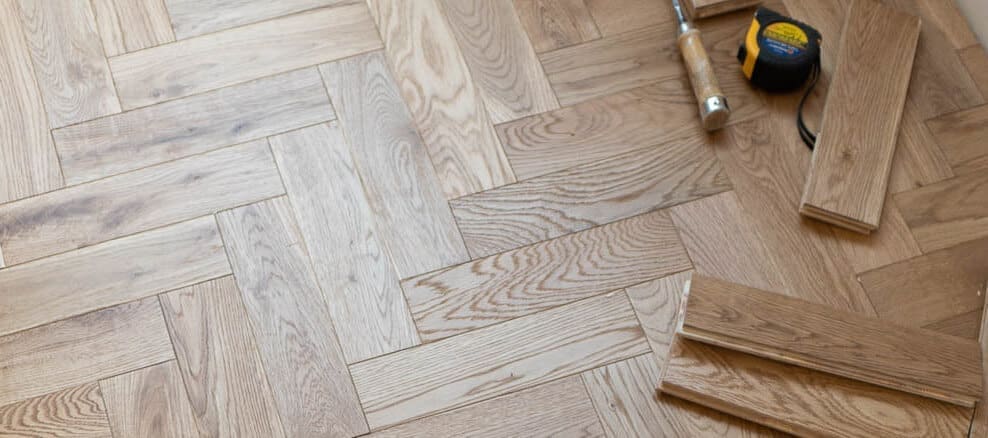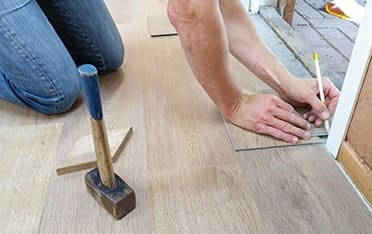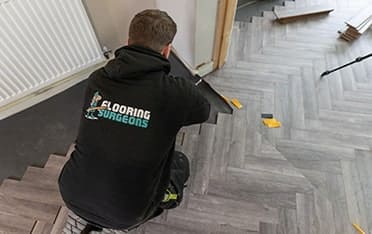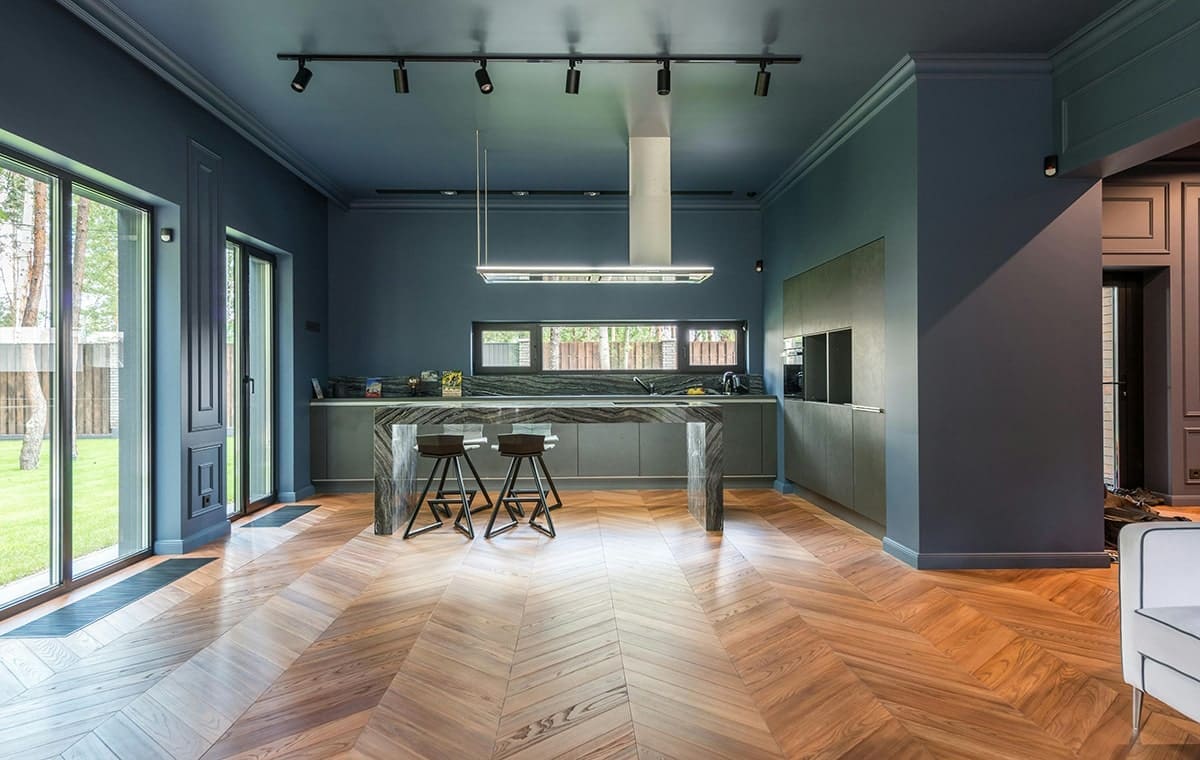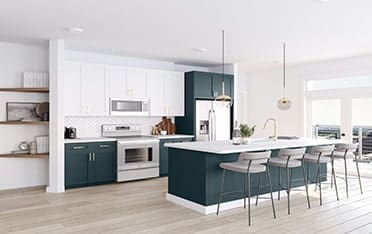Herringbone Flooring has captivated homeowners, designers, and architects for centuries. This intricate pattern, characterised by rectangular planks arranged in a zigzag, V-shaped design, exudes sophistication and timeless elegance.
Whether found in historic European palaces or modern luxury homes, herringbone remains a symbol of refined taste and enduring appeal. But what makes it such a staple in high-end interior design? Let’s explore its origins, why it continues to be popular, and how it compares to traditional plank flooring.
The Timeless Appeal of Herringbone Flooring
Origins of Herringbone in Classic European Architecture
The origins of Herringbone Flooring in classic European Architecture goes back to the Roman Empire, where an early version of the pattern was used in road construction.
By interlocking bricks in a herringbone pattern, the Romans created durable roads that could withstand shifting terrain. This practical approach later inspired European architects and craftsmen who adapted the pattern into interior flooring.
During the Renaissance, herringbone became a hallmark of European architecture, particularly in France and Italy. Inspired by Roman engineering, artisans adapted the pattern for wood and stone flooring, adding elegance to aristocratic homes. Its geometric precision and symmetry made it a symbol of luxury in royal residences and grand estates.
Why It Has Remained a Staple in High-End Interior Design
Herringbone flooring has remained a staple in High-End interior design due to its versatility and elegance. Some of the key reasons it remains a favorite among designers include:
- Aesthetic Elegance – The interwoven pattern brings a touch of style and elegance, making any space feel more refined.
- Association with Luxury – The pattern has long been used in high-end European homes, evoking a sense of aristocracy and class.
- Enhanced Perception of Space – Herringbone floors create a sense of movement, making rooms appear more expansive and visually interesting.
- Adaptability to Various Styles – Whether used in a classic, traditional setting or a sleek, modern space, herringbone complements diverse design aesthetics.
Comparison With Traditional Plank Flooring
While traditional plank flooring remains popular, herringbone offers several advantages and distinct characteristics:
- Visual Appeal – Herringbone flooring features an intricate, elegant design, while traditional plank flooring has a simpler, linear layout.
- Durability – The interlocking pattern of herringbone flooring provides superior stability, reducing the risk of shifting over time compared to traditional planks.
- Installation Complexity – Installing herringbone flooring requires skilled craftsmanship and precise alignment, whereas traditional plank flooring is generally easier and quicker to install.
- Cost – Due to its complex installation process, herringbone flooring tends to be more expensive than traditional plank flooring, making it a premium investment.
- Aesthetic Impact – Despite the higher cost, herringbone flooring enhances a space with its timeless beauty and refined look, making it a desirable choice for upscale interiors.
Why Herringbone Flooring is Still in Style
Herringbone flooring is still in style and is continuously evolving to suit modern tastes while preserving its classic appeal, here are a few reasons why it’s still popular today:
- Wider Planks for a Contemporary Look
- Traditional herringbone patterns use narrow strips, but wider planks give a more modern, spacious feel, making the design less busy and more versatile for contemporary homes.
- Matte & Oiled Finishes Over High-Gloss
- Shiny floors are fading in popularity, with matte and oiled finishes becoming the preferred choice. These finishes enhance the natural texture of the wood, giving a softer, more organic look while reducing the appearance of scratches and wear.
- Lighter Wood Tones for an Airy Feel
- Woods like white oak and ash bring a light, fresh aesthetic, making spaces feel bigger and brighter. These tones are perfect for modern interiors, especially those inspired by minimalist and natural design trends.
- Dark & Dramatic Colours for a Luxurious Look
- Deep, rich tones like walnut or espresso add depth and sophistication, creating a high-end, statement look. Dark herringbone flooring works especially well in period homes and contemporary spaces with bold styling.
- Engineered & Vinyl Herringbone for Budget-Friendly Options
- While traditional solid wood can be pricey, engineered wood and luxury vinyl offers a more affordable way to achieve the classic herringbone look. These alternatives provide durability, water resistance, and easier installation, making them ideal for various budgets.
Modern Trends in Herringbone Flooring
Herringbone flooring continues to evolve with modern design trends, effortlessly blending with different interior styles and functional upgrades.
- Pairing with Minimalist or Classic Furniture
- The timeless pattern works beautifully with both minimalist and traditional interiors. In contemporary spaces, sleek, simple furniture lets the flooring stand out, while in classic settings, vintage or ornate pieces complement its heritage appeal.
- Best Colour Choices for Different Styles
- Lighter tones like white oak and ash create an airy, modern feel, ideal for Scandinavian or minimalist spaces. Richer hues like walnut or dark-stained oak add warmth and sophistication, perfect for period homes or luxurious interiors.
- Mixing with Underfloor Heating and Modern Decor
- Herringbone pairs well with underfloor heating, making it both stylish and practical for UK homes. When combined with modern decor elements like open-plan layouts, statement lighting, and neutral palettes, it creates a seamless blend of classic and contemporary design.
Potential Drawbacks of Herringbone Flooring
While herringbone remains a stylish and timeless choice, there are still potential drawbacks from Herringbone Flooring, here are a few factors to consider before committing to it.
- Higher Installation Costs
- Herringbone flooring requires more precision than standard plank flooring, making installation more labour-intensive and expensive. The intricate pattern takes longer to lay, increasing both material waste and labour costs.
- Professional Installation Recommended
- Unlike standard flooring, which can be DIY-friendly, herringbone needs expert craftsmanship to ensure perfect alignment and symmetry. Hiring a professional ensures a high-quality finish and prevents costly mistakes.
- Can Make Small Rooms Look Busy
- The detailed pattern of herringbone can overwhelm smaller spaces if not styled carefully. Choosing wider planks, lighter wood tones, or minimal décor can help balance the look and keep the space from feeling too crowded.
How to Style Herringbone Flooring for a Timeless Look
Herringbone flooring is a classic choice that never goes out of style. Whether you prefer a modern, minimalist look or a traditional, elegant space, this flooring adds character and sophistication to any home.
Choosing the Right Style:
- Light wood tones (e.g., desert oak, greige) create a bright and airy feel, perfect for modern spaces.
- Darker shades (e.g., walnut, espresso) add warmth and a luxurious touch, great for classic interiors.
- Pair with simple, modern furniture for a clean look or traditional pieces for a timeless look.
Installation Tips:
- Professional installation ensures the best results, as herringbone requires precision.
- Engineered wood or luxury vinyl offers a budget-friendly alternative to solid wood.
- Underfloor heating compatibility makes it a practical and stylish option for UK homes.
No matter your style, herringbone flooring is a stunning, long-lasting investment that adds charm and value to any space.
Conclusion
Herringbone flooring remains a timeless and stylish choice, adding elegance to both classic and modern interiors. While it requires professional installation and comes at a higher cost, its durability and sophistication make it a worthwhile investment. At the end of the day, it all comes down to personal taste—if herringbone suits your style and home, it’s a choice that will never go out of style!
FAQs
Is Herringbone flooring too trendy and likely to go out of style?
No, herringbone flooring has been around for centuries and remains a timeless choice. Its classic pattern has evolved with modern trends, making it versatile enough to suit both traditional and contemporary interiors.
What wood types work best for Herringbone flooring?
Oak (both white and red), walnut, and ash are popular choices for herringbone flooring due to their durability and natural grain patterns. Engineered wood and luxury vinyl are also great options for a more budget-friendly and stable alternative.
Does Herringbone flooring make a room look smaller?
Not necessarily. While the pattern can add visual detail, wider planks and lighter wood tones can help open up a space. If the room is small, choosing a subtle finish and avoiding overly busy patterns can prevent it from feeling crowded.
Does Herringbone Look Too Busy?
Herringbone can look busy in smaller spaces especially with a more narrow plank and bolder colour. To create a calmer look, opt for wider planks and lighter wood tones, which help open up the space.
Is Herringbone flooring more expensive than standard plank flooring?
Yes, herringbone flooring typically costs more due to the intricate installation process and additional material waste. However, engineered wood and vinyl herringbone options offer a more budget-friendly alternative while maintaining the same aesthetic appeal.
Can Herringbone flooring be installed with underfloor heating?
Yes, herringbone flooring — especially engineered wood and vinyl — works well with underfloor heating, providing both style and warmth. Solid wood can also be used but may require extra precautions to prevent warping.
Contact Us
Check out our herringbone collection that will never go out of style! If you’re looking for more information or would like a free consultation, visit our showrooms or Contact Us online!
Halesowen
214A Dudley Road. Halesowen, Birmingham, B63 3NJ
0121 274 8575
Monday – Friday: 9AM – 6PM | Weekends: 10AM – 4PM
Wolverhampton
317 Penn Rd, Wolverhampton, West Midlands, WV4 5QF
01902 836666
Monday – Friday: 9AM – 6PM | Sat: 10AM – 4PM | Sun: Closed
info@flooringsurgeons.co.uk
fitting@flooringsurgeons.co.uk
customerservices@flooringsurgeons.co.uk



